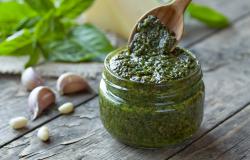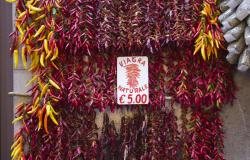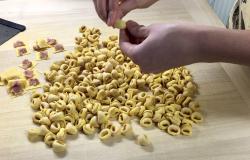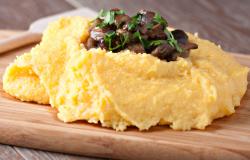Say squash and you think of the triumph of the gigantic orange and yellow pumpkins that grace the American countryside, ripe for spicy pies and Hallowe’en carving. But squash is quintessentially Italian too.
Gourds have a long history
 Although the gourds did not originate in Italy—many countries claim the privilege, including India and Mexico - they were already common in Roman times. Natural philosopher Pliny the Elder called them “a cure-all, comfort for every problem,” while the poet Martial complained that his host, Caecilius, “lacerates them into a thousand pieces. At his home, you’ll eat them as starter. Then he serves them with the first and second course. You’ll have them in front of you once again for pudding, and he makes them into a late-supper snack.” The largest ones were even used as wine or milk vessels.
Although the gourds did not originate in Italy—many countries claim the privilege, including India and Mexico - they were already common in Roman times. Natural philosopher Pliny the Elder called them “a cure-all, comfort for every problem,” while the poet Martial complained that his host, Caecilius, “lacerates them into a thousand pieces. At his home, you’ll eat them as starter. Then he serves them with the first and second course. You’ll have them in front of you once again for pudding, and he makes them into a late-supper snack.” The largest ones were even used as wine or milk vessels.
Later, squash found new fortune in the Middle Ages, particularly in soups and as a meat substitute during Lent, even though some detractors called its flavour bland and its nutritional quality bad. In the late 16th century, the lavish Este court, in Ferrara, happily tucked into a delicate pasta with sweet pumpkin filling - cappellacci - which remains popular in the Northern city to this day.
However, Roman and medieval squashes were rather different from the varieties you find in Italy today. That’s because new ones came in from the Americas with Christopher Columbus. During the 16th and the 17th century, the large, sweet Cucurbita Maxima and Moschata spread across the Italian peninsula. By the 18th century, Vincenzo Corrado, chef to King Ferdinand IV and a very early proponent of the benefits of a vegetable-rich cuisine, was using the new American varieties with gusto - he put them in virtually every menu.
 But squashes were not the preserve of the rich and aristocratic. Indeed, they were even more popular with the poor because they were easy to grow and versatile to use. Called “pork for the poor” - because, like pork, you could make use of every part, down to the seeds - they became soups, pasta and risottos as easily as cakes and jams.
But squashes were not the preserve of the rich and aristocratic. Indeed, they were even more popular with the poor because they were easy to grow and versatile to use. Called “pork for the poor” - because, like pork, you could make use of every part, down to the seeds - they became soups, pasta and risottos as easily as cakes and jams.
The geography of squash: the North
 Unlike other successful American imports, though, squash did not become as ubiquitous as tomatoes and potatoes. Although gourds or their flowers crop up as an ingredient in dishes throughout the peninsula, their culinary geography was and remains limited to some specific areas.
Unlike other successful American imports, though, squash did not become as ubiquitous as tomatoes and potatoes. Although gourds or their flowers crop up as an ingredient in dishes throughout the peninsula, their culinary geography was and remains limited to some specific areas.
The cradle of gourd gastronomy is the Padana plain that stretches on either side of the Po river from Piedmont to Veneto. Perhaps because the soil there was particularly suited to growing pumpkin and squash, the gourds became a staple in the area, particularly in the regions of Lombardy, Veneto and Emilia.
Unsurprisingly, two out of Italy’s top three varieties come from here. The best one is probably Marina di Chioggia, a Cucurbita Maxima which is as ugly as it is delicious. A flattish, green, knobbly skin - which earned the variety the nickname of Zucca Barucca, or pumpkin with warts - hides a sweet, flavoursome, brilliantly orange flesh. It is great for pasta fillings (such as tortelli or cappellacci) but also for baking and pies.
Up there with Marina di Chioggia is the rare Zucca Cappello da Prete, a grey green squash with an exquisite yellow orange flesh. Cappello da Prete is hard to grow (and therefore difficult to find) but it is also exceptionally flavoursome - perfect to make gnocchi.
Just a notch down from these culinary heights, the fields of the Padana plains also produce the tasty Berrettina Piacentina, the easy Zucca Delica and the butternut squash Zucca Violina, whose sweet flesh is ideal for pasta fillings.
Of course, this abundance of crops translates into a vast choice of squash recipes. First among all are the historic ones, such as Ferrara’s cappellacci, and their Mantuan rivals, tortelli di zucca. It is unclear whether Mantua’s tortelli - their exquisitely thin layer of pasta filled with sweet roast pumpkin puree - were borne of the inventiveness of a chef at the Gonzaga court, or from an attempt among the city’s poorer housewives to make agnolini (the meat-filled pasta enjoyed by the city’s upper classes) on a budget. Either way, the result is an intriguing dish where sweet and savoury play hide and seek in the palate—the pumpkin filling is enriched with the pungent note of aged parmesan, a bitter whiff of amaretti, and a spicy hint of mostarda relish and nutmeg.
West of Mantua, in most parts of Lombardy, squash usually makes its way into risotto, infusing the rice with orange sweetness tempered by the sharp note of parmesan. East of it, in Veneto and parts of Emilia Romagna, it becomes soft, velvety gnocchi, often served with smoky ricotta for a tastebud-jolting contrast. And either side of the city, gourds magically turn into featherlight Bundt cakes (sometimes enriched by chocolate, sometimes by raisins), fluffy fritters and a rich jam-like spread.
The geography of squash: the South
 However, some parts of Southern Italy - Campania, Puglia and Sicily—also have a rich squash-growing and eating tradition to rival with the North. The star here is the Zucca Piena di Napoli, a long, vaguely pear-shaped, grey green squash with a vivid orange flesh. It is the ingredient par excellence in soups, particularlyCampania’s cianfotta (also known as giambotta or ciangotta) - a thick, swirling dance of hot and sweet flavours where chilli, aubergines and tomato are a counterpoint to the gourd, pears and plums. But squash is also simply fried and served cold a scapece with a marinade of vinegar, oil, garlic and mint with a touch of chilli (in Campania) or sugar (in Sicily).
However, some parts of Southern Italy - Campania, Puglia and Sicily—also have a rich squash-growing and eating tradition to rival with the North. The star here is the Zucca Piena di Napoli, a long, vaguely pear-shaped, grey green squash with a vivid orange flesh. It is the ingredient par excellence in soups, particularlyCampania’s cianfotta (also known as giambotta or ciangotta) - a thick, swirling dance of hot and sweet flavours where chilli, aubergines and tomato are a counterpoint to the gourd, pears and plums. But squash is also simply fried and served cold a scapece with a marinade of vinegar, oil, garlic and mint with a touch of chilli (in Campania) or sugar (in Sicily).
And across the length of Italy, pumpkin seeds are toasted, salted and eaten as a snack - a recipe that has remained virtually the same since Roman times.
When to enjoy Italian squash
 Seeds are of course good throughout the year, but if you like to really taste Italian squash at its best, the perfect time to do so is the autumn. The jury is out as to whether the best month is October, when most gourds hit shops and restaurants, or Christmas, as squash is a crucial ingredient in many holiday recipes. But perhaps October wins by a whisker thanks to the many gourd-inspired festivals held across the length of Italy.
Seeds are of course good throughout the year, but if you like to really taste Italian squash at its best, the perfect time to do so is the autumn. The jury is out as to whether the best month is October, when most gourds hit shops and restaurants, or Christmas, as squash is a crucial ingredient in many holiday recipes. But perhaps October wins by a whisker thanks to the many gourd-inspired festivals held across the length of Italy.
The best one among them is undoubtedly Di Zucca in Zucca, which takes place in and around Mantua between early September and early December. This two-month-long event, which runs until 8 December this year, includes tastings, themed dinners, cookery challenges, street markets and special pumpkin carving and cooking courses. The most magical day is 31 October, when the orange glow of pumpkin lanterns carved by children will light up Mantua’s historic centre.
Just make sure don’t call anyone a pumpkin while you are in Italy. Far from being an endearment, "zucca" (but also zuccone, big pumpkin, or testa di zucca, pumpkin head) is slang for stupid.


















